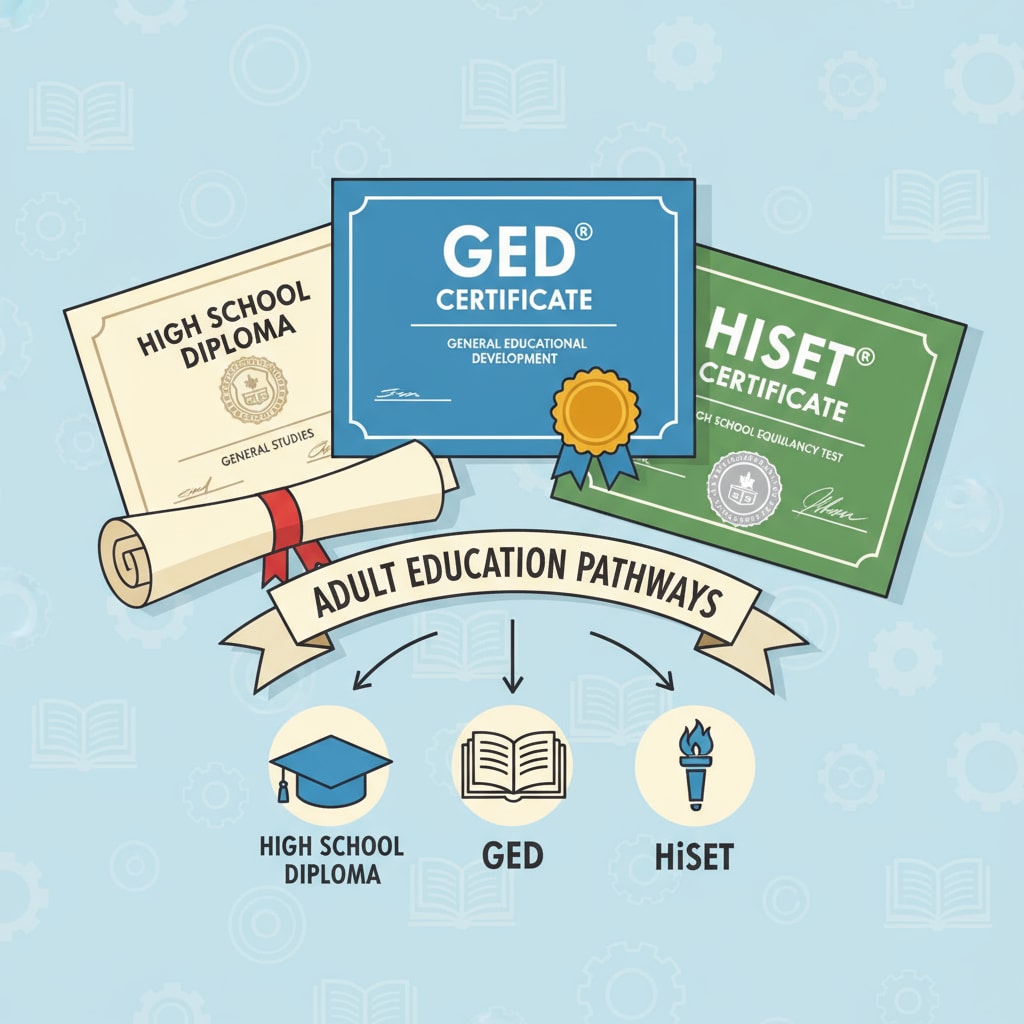In the realm of adult education, the decision between obtaining a high school diploma, a GED (General Educational Development), or a HiSet (High School Equivalency Test) is a significant one. These credentials can open doors to further education, better job opportunities, and personal growth. Let’s delve into the key differences among them.

The Significance of High School Diploma in Adult Education
A high school diploma is the traditional credential awarded upon completing high school requirements. In adult education, it may involve enrolling in a high school completion program. These programs are designed for adults who left high school without graduating. They typically cover core subjects like English, math, science, and social studies. The advantage of a high school diploma is its broad acceptance. It is recognized by almost all institutions, whether it’s a community college, a four-year university, or an employer. For example, College Board states that a high school diploma is a common requirement for college admissions. It gives a sense of completion of the full high school curriculum and may be preferred in some career fields.
Understanding GED in Adult Education
The GED is a high school equivalency credential. It consists of a series of tests that assess knowledge in four areas: language arts (reading and writing), mathematics, science, and social studies. The GED is globally recognized and is a popular choice for adults who want to quickly obtain an equivalency to a high school diploma. It offers flexibility as the tests can be taken at different times and often at testing centers convenient for the test-taker. According to GED Testing Service, many adults choose the GED to move forward in their educational or career paths. However, some institutions may view it differently compared to a traditional high school diploma. For instance, in some competitive college programs, a high school diploma might be more favored.

The Role of HiSet in Adult Education
The HiSet is another high school equivalency option. It also measures skills and knowledge equivalent to those of a high school graduate. The HiSet has different subtests covering similar subject areas as the GED. One of the benefits of the HiSet is its accessibility. It has been designed to be more inclusive, with options for different testing formats and accommodations. This makes it suitable for a wide range of adult learners. Some states may even have specific incentives or support for adults taking the HiSet. But like the GED, it may not always be on par with a high school diploma in the eyes of all institutions.
When deciding between these credentials, it’s essential to consider your long-term goals. If you plan to pursue a highly competitive career or advanced education, a high school diploma might be the best choice. However, if you need a quick way to prove your high school-level knowledge and want flexibility, a GED or HiSet could be more suitable. In conclusion, the choice between a high school diploma, GED, or HiSet in adult education depends on your individual circumstances and aspirations.
Readability guidance: We’ve used short paragraphs and lists to summarize key points. Each H2 section has relevant details presented clearly. Passive语态 has been minimized, and transition words like ‘however’, ‘for example’, and ‘in conclusion’ have been used to enhance readability.


